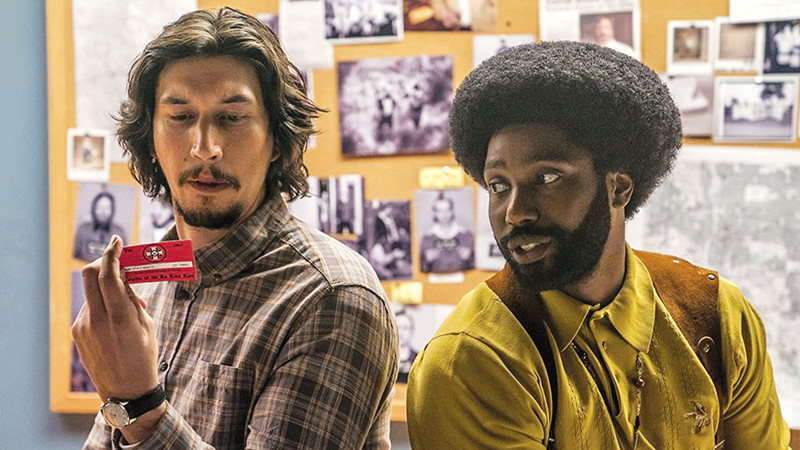
We know there are a few works that are taking the cake for “film of the year”. The Favourite is a late-year surprise to the mainstream, but an expected work of brilliance to the art house crowd. A Star is Born is a surprisingly strong third remake (let me reemphasize that that’s the fourth time the same film has been made). Green Book has won most casual movie goers over whilst polarizing critics. Roma, on the other hand, has been a near-unanimous pick by critics whilst maybe confusing regular popcorn flick buffs.
Perhaps the most unanimously decided-upon film of 2018 is a humble little work by Spike Lee (in what has luckily been a return to form). BlacKkKlansman is definitely an accessible film, but that doesn’t prevent it from being a remarkable work.
While journalists and crowds may be seeing different things this year (look at the huge divides between Widows, Venom, Bohemian Rhapsody, Hereditary and many others), one of the more agreed-upon works is BlacKkKlansman. Here are eight reasons why BlacKkKlansman is definitely the best mainstream work of the year (so, excluding art house, experimental, or indie works).
Keep in mind, there are definitely spoilers up ahead.
1. Its daring opening compares cinema past to present
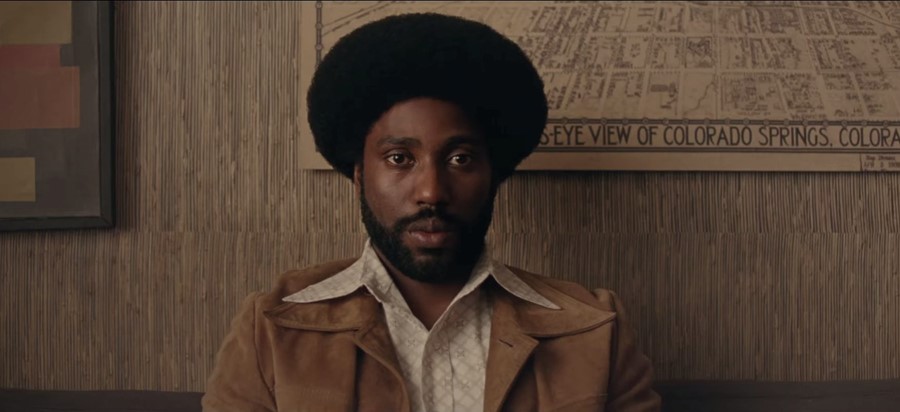
Gone With the Wind is one of the most acclaimed works of all time. As vocal as Spike Lee is with politics, he is one of the biggest fans of the cinematic medium. Planting an iconic shot at the start of BlacKkKlansman is both a tribute to a beloved film (from a cinephile) and a viciously strong statement (from a person of colour in the United States).
In this shot (before we even get a split second of anything from the actual BlacKkKlansman film), we see Scarlett O’Hara helping wounded soldiers and corpses as the result of the Civil War. It’s a stunning shot that glides along (via crane) and eventually soars outwards to expose a flying confederate flag. What was once intended to be a glorious shot is now much more problematic in 2018.
If we actually watched Gone With the Wind in 2018, we would be able to discern that this was a work made in a different time. To see this image preface a film about ongoing racism is food for thought; we have come so very far (enough that this flag affects us differently now), but still have very far to go (this flag has experienced a rebirth in history).
All of this is followed by an Alec Baldwin cameo (let’s not forget his many stints playing Donald Trump on Saturday Night Live: some obvious casting, seeing how this film ends), as he fumbles his way to find the right words of hatred to spew and toxify the United States some more.
With a projector casting images on his face, Lee’s obviously letting us know that cinema has the power to inform. Of course, Spike Lee has never been soft spoken, but this opening is already some of his strongest uses of images and words we’ve possibly ever seen by him.
2. Its bold closure doesn’t hold back on the films message
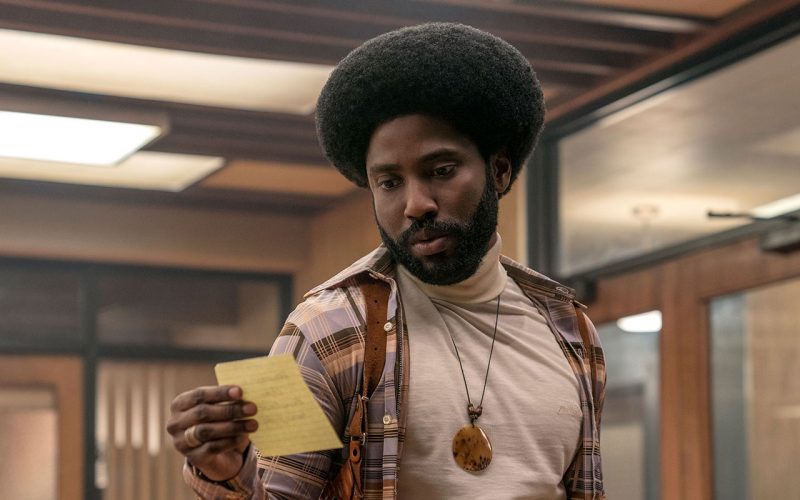
If you thought it opened in a bold way, you had no idea what was heading your way. After cutting to the near-present (the infamous Unite The Right march in 2017), the many obvious tropes Lee tossed at us during the film (the idea that racism can thrive forever on tainted hearts and brainwashed minds) come full circle once witnessing the many things found in this documented footage.
First off, David Duke (the former grand dragon of the Klu Klux Klan, obviously) is heard continuing his desire for America to return to its roots (after seeing the film, this statement is extremely sour to witness by the real figure). Of course there is the vehicular carnage that left many injured and took the life of Heather Heyer.
Finally, Lee takes to the podium to display his hatred of Donald Trump (as if his many references to his presidency in the film weren’t apparent enough), by referencing his controversial comments that equated the Alt Right to the Left Wing. Regardless of what your politics are, you’re not going to find many mainstream, non-documentary based films that are this daring with its connection to real life.
3. The three leads are spectacular
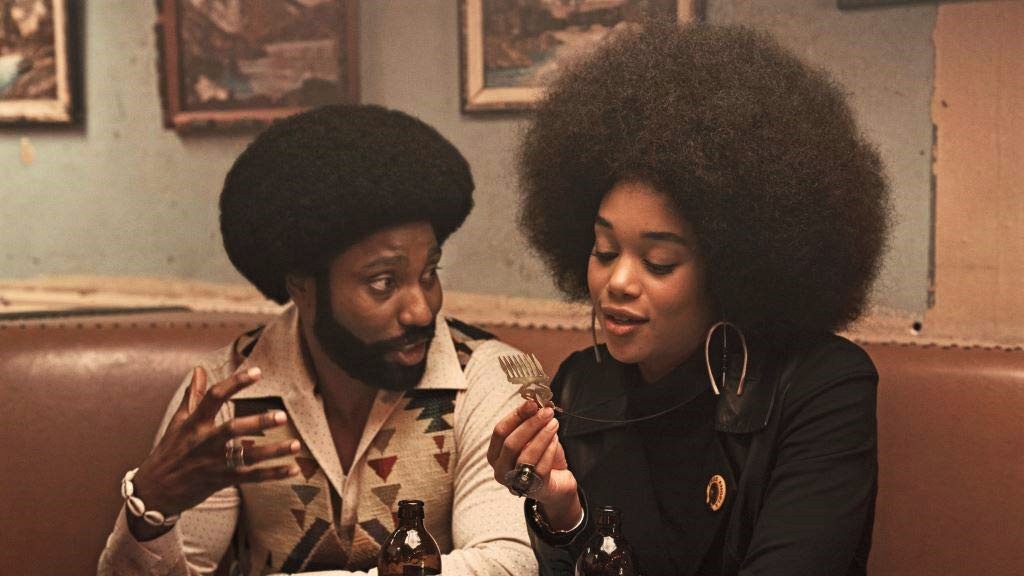
A stern film is nothing without some solid acting to lead the way. John David Washington is obviously his father’s son (Denzel Washington), and is a master at balancing a range of emotions. As Ron Stallworth, Washington is initially naïve but confident. He slowly becomes enlightened, and his enthusiasm turns into courage. He has a good laugh, but can lunge with intensity on a whim.
As a fellow detective named Flip Zimmerman, Adam Driver is a stoic man that flinches very little (yet just enough to show a vulnerability to us, but not to the people on screen). There is a huge amount of dramatic irony that Driver can bring to a performance, which is so difficult to execute. We are fully aware of Zimmerman’s intentions, and Driver never has to fully wink at us to remind us. Yet, we believe that he can convince the majority of his peers that he is a racist, homophobic bigot solely through his work and not the reaction of the klan members.
Finally, Laura Harrier has reached a new tier of acting with her take on the president of the black student union (Patrice). Patrice is driven by a cause, but not blinded by hatred. She is very set in her ways, but is willing to listen (and not necessarily agree) either way. With these three leads, the complexities that such a political film can harness come to full fruition.
4. The score cleverly blends 70s sounds with modern day film compositions
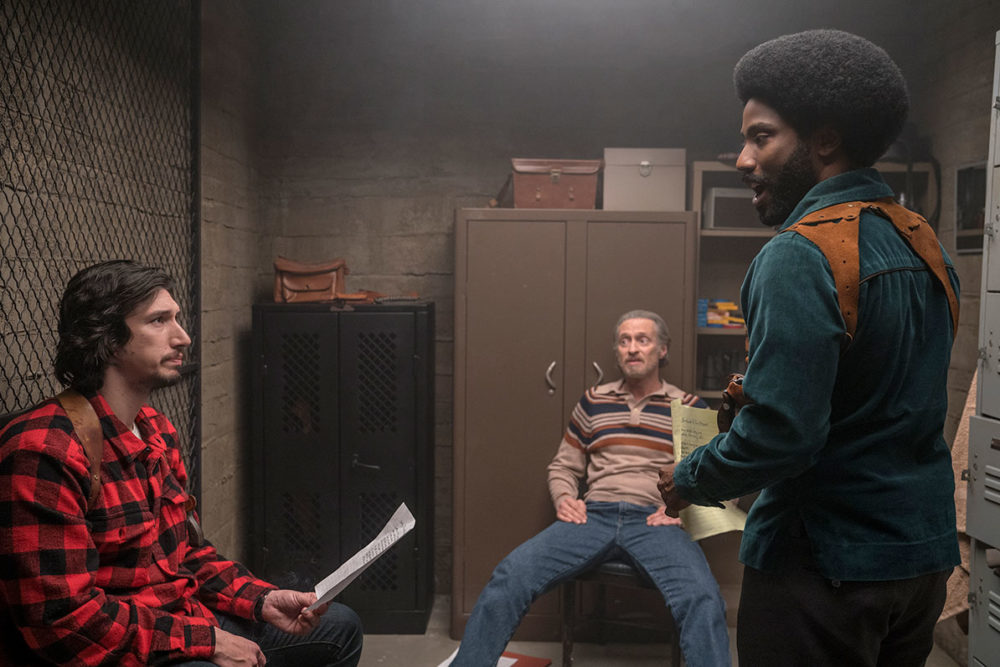
Of course, there are the additions of popular songs from the time (including Emerson, Lake & Palmer’s Lucky Man, Ball of Confusion by The Temptations, and more). There’s also an exclusive cut by the late Prince titled “Mary Don’t You Weep” featured during the ending credits. However, it is the clever score by Terence Blanchard that merges the twanging guitars and pulsating beats of a ‘70s action film with the purely orchestral sounds of a regular film score.
Much of BlacKkKlansman is driven by being an elevated, modern day take on a Blaxploitation work of yesteryear, and the soundtrack is certainly no different. The work is reminiscent of what Quincy Jones brought to In the Heat of the Night: familiar and an homage, but a reinvention and fresh. You can’t tell me that guitar line wasn’t stuck in your head for days after watching this film.